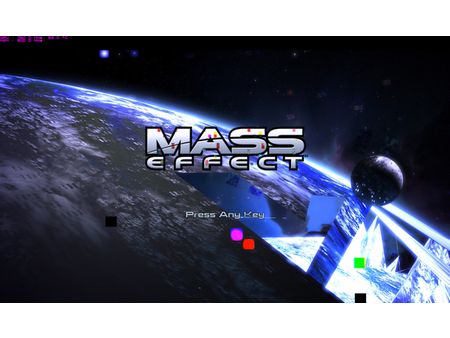Radeon HD 4870 X2: Four Cards Compared
Problems with Catalyst 8.10: Part 2


A fundamental problem with all of the tested cards was that the Catalyst 8.10 didn’t reduce the clock speed of the Radeon HD 4870 X2 in 2D mode. After starting up Windows Vista, the test system showed a power consumption of 240 watts (from the socket), the fan speed was at 29%, and the temperature rose to 88°C or 89°C. The graphics driver can reduce the clock speed, but it doesn’t do this until we actually started a 3D application. Once the graphics driver has to change the clock speeds and we closed the 3D application, power consumption dropped to 202 watts, the fan speed went down to 27% and the temperature fell below 80 degrees.
In a measured benchmark, you can instantly see the higher power consumption, but for the buyer of a HD 4870 X2, this is not acceptable. If you don’t start a 3D application right away, you will waste and additional 38 watts of electricity and grill the GPUs with an additional 10 degrees of heat. This observation is based on our test system, and all of the X2 cards we tested. If you don’t have a power meter on your socket, you should keep an eye on the fan speed and the temperatures after Windows Vista has started up: 78°C and a fan speed of 27% are normal.
HIS has a problem here. To begin, we increased the card’s clock speed to compete with the factory-overclocked boards in this comparison, and in our high load test we saw some color and graphics errors—a clear sign of the clock speed or temperatures being too high. Interestingly, when we reduced the clock speed to its normal settings, the image errors occurred once again after about five minutes of heavy loading. Our first guess was that the card was damaged by the overclocking. But this guess turned out to be wrong. After manually increasing the fan speed, the errors disappeared. Even at stock clocks, the board seemed to be running far too hot.
The problem is once again the fan profile. The card reaches 92°C to 95°C in the high load test, but the maximum stable temperature seems to be below 91°C. Put this in the context of real-life game play, though. During a game, the load usually falls between 70% and 95%, which gives the card enough time to cool down every once in a while. The 100% load in our high-load test is really extreme, and we have also seen a GTX 260 in SLI mode overheat. This shouldn’t happen, of course. But these boards seem to be running close enough to the edge that the issue can be triggered with an extreme-enough task.
Get Tom's Hardware's best news and in-depth reviews, straight to your inbox.
Current page: Problems with Catalyst 8.10: Part 2
Prev Page Problems with Catalyst 8.10: Part 1 Next Page Radeon HD 4870 X2 Specifications and Ports-
Not only do we have four super-fast Radeon HD 4870 X2s to test, but also a list of 31 other graphics configurations including CrossFire and SLI setups. If you're in the market for AMD's fastest card available, you'll want to see this.Reply
Radeon HD 4870 X2: Four Cards Compared : Read more -
neiroatopelcc "Because of accessories and price, Sapphire is our best-buy recommendation."Reply
One slight warning about sapphire though. If you have problems, don't expect their support team to help you before you've solved the problem yourself!
I made a ticket regarding some issues with my 4870 on august 7th, and received a reply on the 26th of september! That's 46 days to address an error they simply stated would go away with a bios upgrade from their homepage!
As for the article, I actually liked the detailed driver errors they encountered. Not that I liked the errors themselves, but I liked them being explained. Usually you just read 'after spending some hours resolving driver errors ....' without getting any wiser. -
Pei-chen Wow, AMD cards consume power like a Detroit SUV. I like Nvidia GTX 2xx series’ Toyota Prius like efficiency at idle.Reply -
ilovebarny Why didnt they use the GTX260 Core 216? its like way better than the regular GTX260. And i just read yesterday that Nvidia was only going to make GTX260 Core 216 now. http://www.fudzilla.com/index.php?option=com_content&task=view&id=10497&Itemid=1Reply -
enforcer22 Pei-chenWow, AMD cards consume power like a Detroit SUV. I like Nvidia GTX 2xx series’ Toyota Prius like efficiency at idle.Reply
Hmm your right. Power house vs crippled mouse.. yeah your analagy sucked im sure mine did to but all i saw from what you typed was i like weak stuff dont give me more power. -
bdollar seems to me if you are going to be comparing the highest end cards and even crossfire them for 4x you would have the highest resolution as one of the options. i would think people considering going x2 in crossfire would consider a 30" screen.Reply
don't get me wrong, i liked the article but would have liked to have seen the resolution spectrum hit the top. -
It's nice to see the 9800GX2 included in the tests. I was considering the 4870x2 due to all the rave reviews but they never had the comparison like this against my current 9800GX2. I won't be getting new card anytime soon it seems. Thanks.Reply

